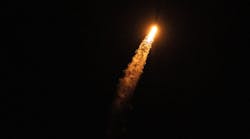Hypersonic cruise missiles are viewed by the U.S. Department of Defense (DoD) as threats of growing significance, especially weapons launched by Russia and China.
During testimony at a recent House Armed Services Committee Strategic Forces Subcommittee hearing on the fiscal year 2023 strategic forces missile defense and missile defeat programs, U.S. Navy Vice Admiral Jon A. Hill, director of the Missile Defense Agency (MDA), addressed the importance of developing a stout defense against hypersonic cruise missiles. He also explained how a layered missile defense system will be needed to guard against the unpredictable paths of hypersonic missiles.
Part of the challenge in guarding against hypersonic cruise missiles is the unpredictability of the source, since they can be readily launched from several types of naval vehicles, including submarines and aircraft carriers (see figure). According to Hill, in March 2023, the MDA, together with the U.S. Space Force and Space Development Agency, plan a launch of two interoperable prototype satellites. By collecting sensor tracking data, the satellites will provide the capability to pinpoint hypersonic cruise missiles from space.
The satellites would serve as components within multifunction terrestrial- and space-based measurement capability for long-range detection and warning of cruise missiles, including hypersonic weapons. The admiral also mentioned development of glide phase intercept capability that would add to layered defense.
Hill was joined in the Armed Forces testimony regarding the need for advanced defense-technology development against hypersonic cruise missiles by John F. Plumb, the assistant secretary of defense for space policy; Air Force Lieutenant-General John E. Shaw, deputy commander of the U.S. Space Command; and Army Lieutenant-General Daniel L. Karbler, the U.S. Army Space and Missile Defense Command commander.
